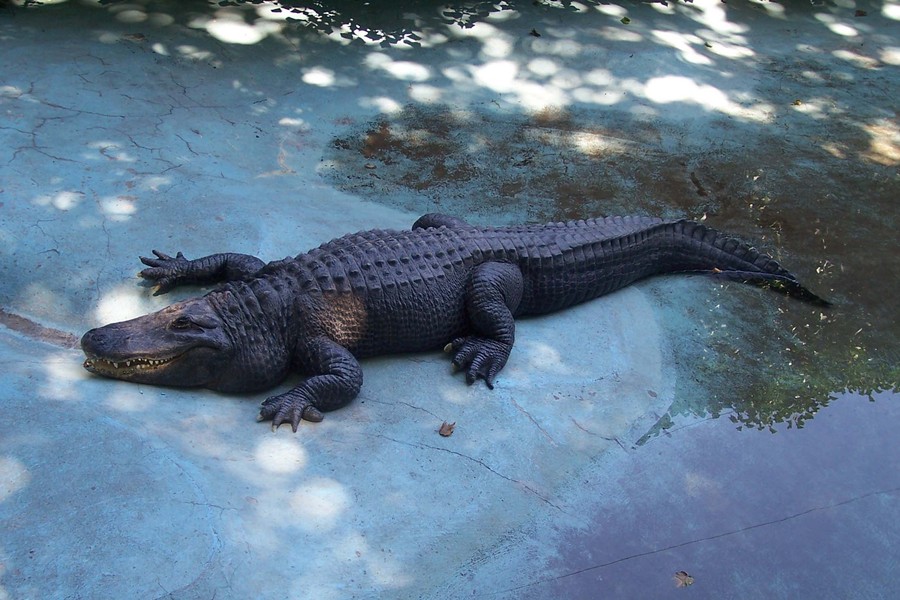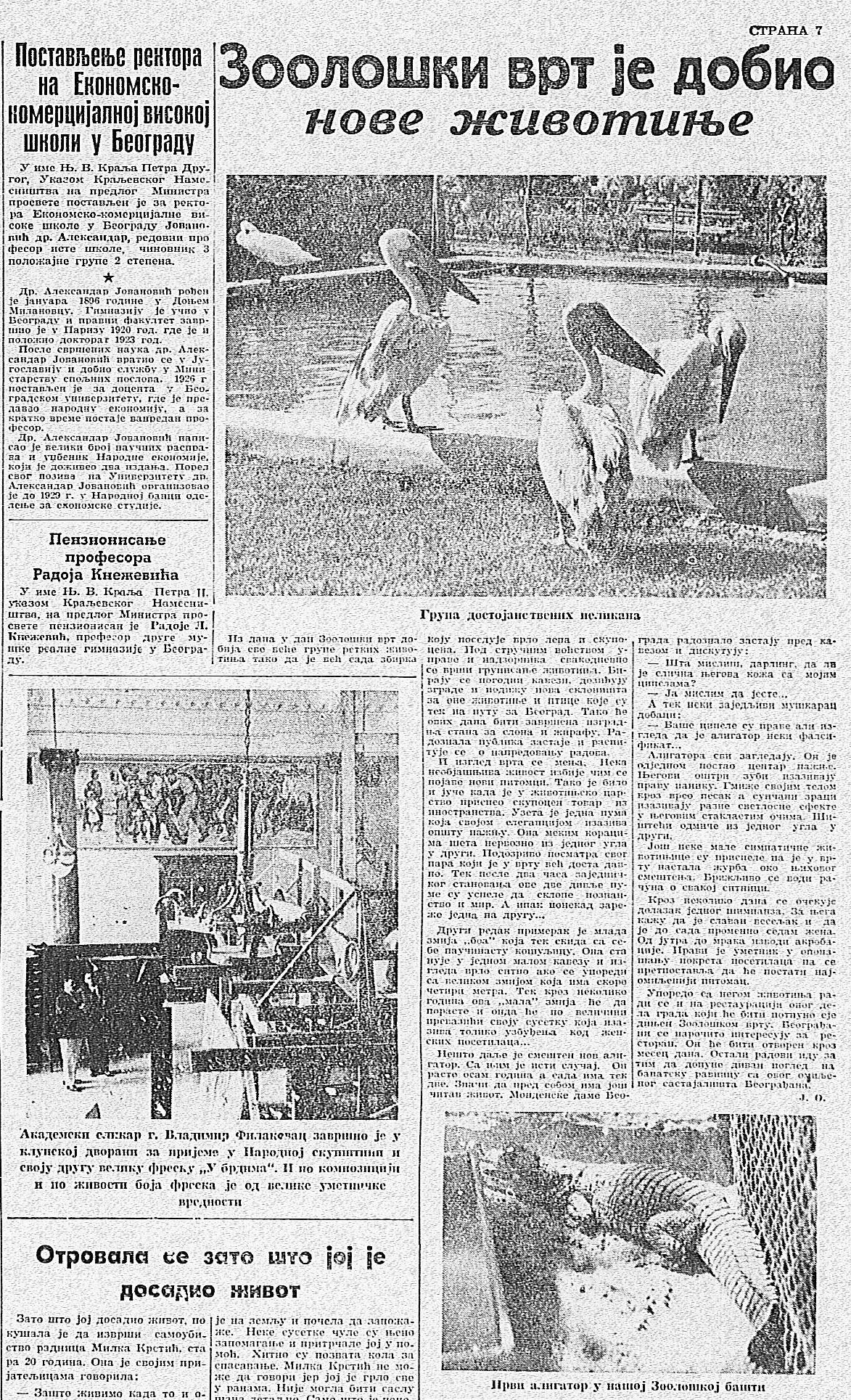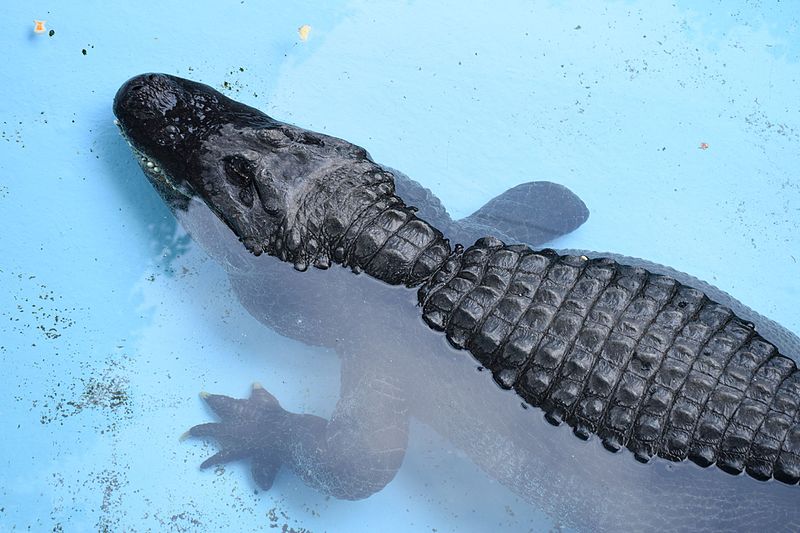
Photo: Wikipedia /Новик А.Н.
City history in the eyes of an alligator
“Do not cause excess noise near his habitat, that won’t get him to move.”
Try to imagine yourself reading this warning. Where are you in that moment? Who is that stubborn lazybones? Let us help you – he lives between the oldest walls in Belgrade. He is also – according to legend – the oldest living resident of our city.
His full name is – the American alligator Muja. He arrived from his native Germany to Belgrade in 1937. Nobody knew for sure how old he was, but at the time he was a strong, young, fully grown male so the veterinarians estimated him to be around three years old. Still, in Muja’s “personal ID” his birthday is listed under the date he arrived at the “Vrt dobre nade” which, despite making him younger, still makes him the officially oldest American alligator in the world. But, what we are interested in today is what this amazing Belgrade citizen would have to tell us if he could speak.

Photo: Danas, 10th Avgust 1937 - Newspaper report about Muja's arrival to Belgrade
Muja under a rain of fire
As one would expect from his perspective, life after moving to the Balkans wasn’t very peaceful. His little corner – the only one he ever knew – Muja shared for a time with his better half. Days went by peacefully until one morning the Zoo was struck by an earthquake and fire, at the same time. It was the 6th of APril 1941 and in the following days most of the walls guarding the wild animals were destroyed. Many of them lost their lives, but Muja managed to escape unscathed. The war drama in the microcosm of the Belgrade Zoo was turbulent enough to fill a feature-length movie.
The sudden alarm that shook Belgrade that morning made many citizens flee the streets and seek shelter. The citizens who lived near Kalemegdan rushed to the Zoo believing they would be safe from the bombs there. Nobody would think that the Fascists would have any interest in bombing wild animals, so many people sought safety in the underground spaces of the Zoo, which today serve as winter shelter for certain species. However, the first bomb happened to fall exactly there, taking with it the lives of many Dorcol people, Zoo workers, zebras, elephants, wild sheep, various birds. The animals that didn’t die immediately went running throughout the city. Imagine a flock of ostriches in Slavia, a wounded bison in Knez Mihajlova or a young jaguar in the entrance of your building. Sadly, in general panic and due to the danger they posed to humans, many of the escaped animals were killed. But not Muja. He and the hippo called Buca were the only survivors among larger animals.
But wait – the war isn’t over yet. It so happened that the Zoo became a shelter for the German troops during Belgrade liberation. There is no documentation about how the Zoo was run during that time or how the animals were taken care of, but it’s known that some of them ended up eaten by the soldiers. The feast ended in 1944 under another rain of bombs, this time from the Allied forces. In an attempt to destroy the camped Fascists, the Zoo was bombed into the ground and everything that was alive in it was killed. But not Muja the alligator.

Photo: Milica Buha - Muja after a life-saving leg amputation
The oldest favorite of Belgrade citizens
As we all know, the hero of Belgrade’s Zoo survived another, more recent bombing of Belgrade. In the 1960’s his roommate died and since then the last alligator in the world lives a solitary life. On the other hand, the Zoo workers who are much closer to Muja than us, who see him maybe once a year from above, say that he is very vital and active for his age and that he carries so much history in him that he enjoys a privileged status. It is enough for certain Belgrade tour guides to include him in their tours. We listened to one of them tell Muja’s tale to a gathered group of visitors, when a little girl who was watching the alligator from the arms of her grandfather turned to him and asked:
“Grandpa, is this crocodile alive?”
“I don’t know Honey, I asked my grandpa the same thing 60 years ago.




 3 ℃
3 ℃




